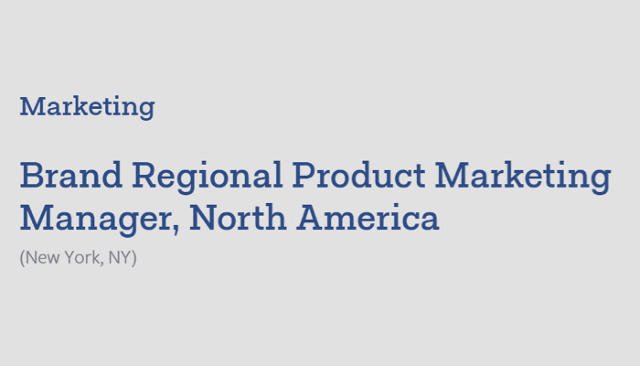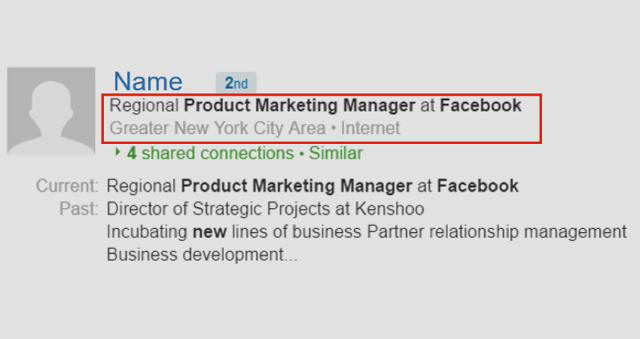4 Steps To Landing A Job Referral Without Any Insider Connections
Quick—what’s the first thing you do if you’re looking for a new job?
If you’re like most people, you head to LinkedIn and start searching for mutual connections at the companies you’re looking to work for.
And rightly so. It’s widely understood that one of the best ways to get your resume noticed is by having a current employee refer you. In fact, according to research by the recruiting platform Jobvite:
- Employee referrals have the highest applicant-to-hire conversion rate—only 7% apply via referral, but they account for 40% of all hires.
- Applicants hired via referral start their new jobs sooner than applicants found through career sites (29 days for referrals versus 55 via career sites).
- Referred hires get paid more than those hired from any other channel.
Simple enough, right? Well, not really. Because chances are you don’t know anyone at the company. Does that mean we can’t get referrals, though? Certainly not.
When I first moved to New York, I knew absolutely no one—not a single soul. But over the next 12 months, I was able to get referrals for jobs at Google, Microsoft, Twitter, and more. Rather than submitting 50 resumes and praying (we all know the feeling), or going to hundreds of meet-ups (ugh), I used a laser-focused approach to networking.
Job hunting can feel like a numbers game (and to a certain degree it is), but this approach can drastically improve your odds of landing an interview.
1. Find Influencers
Since you don’t know anyone at the company, you have the luxury of being able to choose the person you want to build a relationship with. Ideally, that person is going to have some influence on the hiring decision for the position you have in mind.
Let’s say, for the sake of our example here, that you want to work at Facebook as a regional product marketing manager in the New York office. First things first, check to make sure that there’s an open position:

Nice! Time to fire up LinkedIn and find someone who can help your cause.
If I search for “Regional Product Marketing Manager Facebook New York,” I find my influencer (or one of them—check out all of the matching profiles and look for points of commonality):

2. Get In Touch And Set Up A Meeting
Now that you have your target influencer, it’s time to build the relationship.
The first step is to reach out and ask for advice. If you need some help finding their contact information, check out VoilaNorbert.
When cold emailing busy folks, there are a few keys to improving response rates:
- Keep it concise.
- Address the person you are emailing by name.
- State who you are and make it personable.
- Make it clear that you are only looking for advice; do not mention anything about a job.
- Include some modest, tactful flattery that positions the person as an expert whose advice and experience you respect.
- Ask politely for a short chat at their office or over a quick coffee at their convenience.
As for the subject line of your email, Fast Company contributor Shane Snow ran an (unscientific) experiment by emailing 1,000 C-level executives from Fortune and Inc. 500 companies. He found that the subject line “Quick Question” made up 66.7% of total replies. I later put that finding to the test myself and saw similar results.
At any rate, if the first person you reach out to doesn’t respond, don’t give up! These people are extremely busy and, like the application process itself, cold emailing is itself something of a numbers game—patience and persistence are key.
If you’re met with radio silence, send a follow-up a few days later. If you still don’t hear, head back to LinkedIn and reach out to other influencers until one bites.
Once you do land a meeting, you should do some thorough research on the person. Start with the usual suspects: LinkedIn, Facebook, Google, etc. The more you know, the easier it will be to build the relationship.
3. The Million-Dollar Question
You’re on your way to the meeting. You have your questions prepared, you’ve picked the appropriate outfit, all that jazz.
No matter what, you need to make sure you ask this one question: “What is the biggest challenge your team is facing right now?”
This is the difference between an informational networking chat and the type of subtle reconnaissance that can ultimately lead to a job referral. Get them to be specific: Why is it happening? How did it happen? What is the impact? What are the limitations for solving it? You really want to dig in here.
After your conversation, always send a thank-you note.
4. Craft A Solution
Now you’re going to spend the next week or two researching the hell out of their problem and putting together a solution (which also happens to highlight your skill-set).
Some thoughts to consider:
- Reach out to friends and influencers in the industry and get their take on the issue.
- Put yourself in the company’s shoes: Consider budget constraints, red tape, and other realistic barriers
- If packaging up your proposed solution to the problem falls outside your personal abilities, don’t despair—go the extra mile: Consider hiring someone on Upwork or a similar platform to help you nail down the details and make your proposal look amazing.
Worried this will feel like a presumptuous overreach or just strike your prospective employer as wide of the mark? There’s a way to make sure that doesn’t happen—that your proposal really is a viable solution to a real problem inside the company. Here’s a usability test that Raghav Haran used to get a job at Airbnb through this very method.
Then you’re going to send your influencer a follow-up saying something along these lines:
I thought a lot about our conversation last week, and I put together a proposal that I think could help solve your problem. I’d love to hear your thoughts.
Now hang tight and wait for their reply.
If your proposal is good—even if it isn’t quite right but shows the kind of thinking they could use—your influencer will share with it with his or her team. At that point (and because, as you already confirmed, they’ve got a position open), they may ask you whether you’re looking for opportunities.
And of course you are.
Graeme Austen is the founder of Cultivated Culture, a resource dedicated to helping professionals pay themselves, not their “dues.” In 2014, Graeme moved to New York City with no connections and landed offers from Google, Microsoft, Twitter, and Uber along with a 200%+ raise.
Fast Company , Read Full Story
(30)













